Jessica Knauss's Blog, page 22
June 1, 2015
An Age of Innocence: A Guest Post by Ron Shannon
Today we have more recent history to share. Ron Shannon, author of Gabriel's Wing, has stopped by to tell us how the zeitgeist of the 1960's inspired the amazing but credible story.
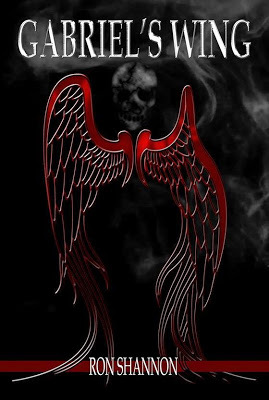
What if Charles Dickens had written about these years? Would he have proclaimed them to be the best and worst of times? Would he have seen the extreme contrasts? Perhaps, but there is one thing I believe to be true, one thing I will proclaim without hesitation. The times were so unlike now, so different in so many ways to any other time, that a student would be forced to wonder if they really existed.
The year was 1969. It was the year we went to the moon and a nation watched and, arguably, felt more united than at any other time in history. It was the year Woodstock happened, quite by accident. What had been planned to be nothing more than three days of music turned into a historical event that would never be duplicated even when we tried. It was the year Nixon went to the White House. It was the year the Rolling Stones took the stage at Altamont and the tragedy that ensued marked the end of an era. It was an age of innocence and hope and at the same time it was an age of shame and misery. It is the backdrop, the setting, I used for my novel, Gabriel’s Wing.
Nobody can truly point to any one thing and state it was what made the sixties different than any other decade. Like what made the twenties roar, the social upheaval of the sixties was the result of many things. A race of people stood up and demanded their civil rights. Leading the crusade were such men as Martin Luther King Jr. and Bobby Kennedy. Women continued a long fight to be given fair and equal recognition under the law. A war on the other side of the world had been raging on for years. That wasn’t anything new. This war was unpopular and no one quite knew why we were involved. It was on the other side of the world and the ideologies at stake were vague and unrelated to hometown America. But none of that made Vietnam unique. What made Vietnam so different was television. Young people came home from school, turned on the television, and the war was right there in their living rooms. They didn’t have to imagine the horrors of the battlefield; the evening news brought it home live and, if you were lucky, in color.
However, the one thing I think made the sixties so different than any other decade, including the twenties, was the age paradigm. The age of the population was out of balance. Attendance in high school and in college had grown exponentially. The baby boomers of the forties and fifties were becoming young adults. Their voice was heard loud and clear. Their influence on the culture, the music, and the fashion was unmistakable. Television not only gave them access to the war, but it also gave them motivation to dream. Young people wanted a different world than what their parents and grandparents had built before them. They didn’t want to settle for what was expected of them. They had their own ideas, determination, and most importantly their own desires. Many of them didn’t sit and idly discuss the world and its possibilities. They left home and actively sought what they wanted. Unfortunately, the sudden migration of young people, the disillusionment that came with failure, provided predators with an endless reservoir of prey. At least that was a major assumption I made when I sat down to write Gabriel’s Wing.
By 1969 the term “flower child” had expanded to encompass any of the counter-cultures who practiced the principles of peace, free love, and universal understanding. Long hair, colorful clothes, and drug experimentation gained universal acceptance. When I thought of a flower child I didn’t have a preconceived notion of a hippie living on the streets of San Francisco. I thought of any young person with hopes and dreams outside of his or her parents’ influence. That pretty much meant any young person between the age of thirteen and twenty-five.
I once heard a flower child was the east coast answer to the west coast hippie. That notion is incorrect. The terms flower child and flower power had more to do with peaceful antiwar demonstrations than geography, but I liked the concept. Wrong or right, I thought about the young people on the east coast and what destination they would choose to pursue their dreams. Of course, New York had to be my first choice. What if they didn’t make it to New York? Would they end up in New Jersey? Not that I have anything against New Jersey. I live in New Jersey. The northern part of the state is lovely. I have experienced its beauty. I decided it offered a wonderful contrast to the plight I had formulated for the flower children in my novel. They realize the death of their dreams, the shock of disillusionment, and the persuasion of evil.
I have read about young girls falling into desperate circumstances. They do things to survive they would never believe they were capable of doing. What if the victim in this case was not a young woman, but a young man? A nineteen-year-old boy who could pass for thirteen would be an attractive target. What would be the worst thing to happen to him? He suffers the same degradation and fear a young woman would experience. He finds strength in another youth, not a man, but a young woman.
Could this story have a hero? And if it does, wouldn’t it be appropriate for him to be running from the memory of lost dreams? That’s a very good possibility, but what would make it more suitable to the times? Why not a woman? Better yet, a woman with an additional burden. What if she is the daughter of a white father and a black mother? Could she be the hero? Why not?
In the late sixties more women were entering the work force than ever before. My protagonist, Tillie Thornwhistle, was such a woman. Could a woman in the sixties achieve what Tillie achieved? That question is best left unanswered. What I proposed is that she did and others probably did as well. She is a strong woman in a demanding situation.
In many ways Gabriel’s Wing is a dark tale. It examines what could’ve happened to many of the young adults who left home looking for a new life. However, it’s not completely dark. The story examines components of the sixties that aren’t usually explored. I make assumptions and draw on various what if scenarios. Tillie Thornwhistle does not exist except in my imagination. Her achievements, her job, her place in society are just a bit ahead of her time. Again, I ask, why not?
Ron Shannon's Gabriel's Wing is available at Amazon, as is his The Hedgerows of June.
Find author Ron Shannon on Facebook.

What if Charles Dickens had written about these years? Would he have proclaimed them to be the best and worst of times? Would he have seen the extreme contrasts? Perhaps, but there is one thing I believe to be true, one thing I will proclaim without hesitation. The times were so unlike now, so different in so many ways to any other time, that a student would be forced to wonder if they really existed.
The year was 1969. It was the year we went to the moon and a nation watched and, arguably, felt more united than at any other time in history. It was the year Woodstock happened, quite by accident. What had been planned to be nothing more than three days of music turned into a historical event that would never be duplicated even when we tried. It was the year Nixon went to the White House. It was the year the Rolling Stones took the stage at Altamont and the tragedy that ensued marked the end of an era. It was an age of innocence and hope and at the same time it was an age of shame and misery. It is the backdrop, the setting, I used for my novel, Gabriel’s Wing.
Nobody can truly point to any one thing and state it was what made the sixties different than any other decade. Like what made the twenties roar, the social upheaval of the sixties was the result of many things. A race of people stood up and demanded their civil rights. Leading the crusade were such men as Martin Luther King Jr. and Bobby Kennedy. Women continued a long fight to be given fair and equal recognition under the law. A war on the other side of the world had been raging on for years. That wasn’t anything new. This war was unpopular and no one quite knew why we were involved. It was on the other side of the world and the ideologies at stake were vague and unrelated to hometown America. But none of that made Vietnam unique. What made Vietnam so different was television. Young people came home from school, turned on the television, and the war was right there in their living rooms. They didn’t have to imagine the horrors of the battlefield; the evening news brought it home live and, if you were lucky, in color.
However, the one thing I think made the sixties so different than any other decade, including the twenties, was the age paradigm. The age of the population was out of balance. Attendance in high school and in college had grown exponentially. The baby boomers of the forties and fifties were becoming young adults. Their voice was heard loud and clear. Their influence on the culture, the music, and the fashion was unmistakable. Television not only gave them access to the war, but it also gave them motivation to dream. Young people wanted a different world than what their parents and grandparents had built before them. They didn’t want to settle for what was expected of them. They had their own ideas, determination, and most importantly their own desires. Many of them didn’t sit and idly discuss the world and its possibilities. They left home and actively sought what they wanted. Unfortunately, the sudden migration of young people, the disillusionment that came with failure, provided predators with an endless reservoir of prey. At least that was a major assumption I made when I sat down to write Gabriel’s Wing.
By 1969 the term “flower child” had expanded to encompass any of the counter-cultures who practiced the principles of peace, free love, and universal understanding. Long hair, colorful clothes, and drug experimentation gained universal acceptance. When I thought of a flower child I didn’t have a preconceived notion of a hippie living on the streets of San Francisco. I thought of any young person with hopes and dreams outside of his or her parents’ influence. That pretty much meant any young person between the age of thirteen and twenty-five.
I once heard a flower child was the east coast answer to the west coast hippie. That notion is incorrect. The terms flower child and flower power had more to do with peaceful antiwar demonstrations than geography, but I liked the concept. Wrong or right, I thought about the young people on the east coast and what destination they would choose to pursue their dreams. Of course, New York had to be my first choice. What if they didn’t make it to New York? Would they end up in New Jersey? Not that I have anything against New Jersey. I live in New Jersey. The northern part of the state is lovely. I have experienced its beauty. I decided it offered a wonderful contrast to the plight I had formulated for the flower children in my novel. They realize the death of their dreams, the shock of disillusionment, and the persuasion of evil.
I have read about young girls falling into desperate circumstances. They do things to survive they would never believe they were capable of doing. What if the victim in this case was not a young woman, but a young man? A nineteen-year-old boy who could pass for thirteen would be an attractive target. What would be the worst thing to happen to him? He suffers the same degradation and fear a young woman would experience. He finds strength in another youth, not a man, but a young woman.
Could this story have a hero? And if it does, wouldn’t it be appropriate for him to be running from the memory of lost dreams? That’s a very good possibility, but what would make it more suitable to the times? Why not a woman? Better yet, a woman with an additional burden. What if she is the daughter of a white father and a black mother? Could she be the hero? Why not?
In the late sixties more women were entering the work force than ever before. My protagonist, Tillie Thornwhistle, was such a woman. Could a woman in the sixties achieve what Tillie achieved? That question is best left unanswered. What I proposed is that she did and others probably did as well. She is a strong woman in a demanding situation.
In many ways Gabriel’s Wing is a dark tale. It examines what could’ve happened to many of the young adults who left home looking for a new life. However, it’s not completely dark. The story examines components of the sixties that aren’t usually explored. I make assumptions and draw on various what if scenarios. Tillie Thornwhistle does not exist except in my imagination. Her achievements, her job, her place in society are just a bit ahead of her time. Again, I ask, why not?
Ron Shannon's Gabriel's Wing is available at Amazon, as is his The Hedgerows of June.
Find author Ron Shannon on Facebook.
Published on June 01, 2015 00:30
May 25, 2015
Medieval Cucumbers
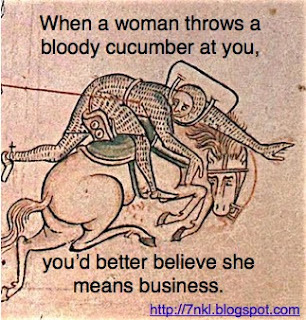
The most memorable scene in the medieval epic on which I based Seven Noble Knights involves the antagonist, Doña Lambra, sending her servant to throw a cucumber dipped in blood at the hero, Gonzalo González. While earning my PhD, I read an article about the possible meanings of this act. Its apparent bizarreness and the way it made scholars scratch their heads so many hundreds of years later planted a seed in my mind. That seed flowered into Seven Noble Knights, 130,000 words of offenses, revenge, lust, love, and Spanishness. (More about the length later.)
So imagine my joy when I found this among my PhD papers:
30. Whoever injures someone with an egg, with a butello, or with a cucumere [two kinds of cucumber], or with any other thing that can dirty him should pay ten aurei if the plaintiff can prove it; but if not, he should clear himself with two of four named from his parish and he should be believed. [The Code of Cuenca (twelfth century) translated by James F. Powers]
It hadn't occurred to me to scan medieval legal documents for cucumber scenarios, yet here they were. Cuenca is a city in eastern Spain, a significant distance away from the area of Lara, where the bloody cucumber takes place in the legend. Apparently, cucumbers were threatening enough to merit legal rules on them in the far-flung reaches of medieval Hispanic Christendom.
Aurei were the more valuable coins of the realm, cast in gold and with legislated weights, so ten of them is not an insignificant fine. It would cover the cost of a donkey or a few goats, for sure. Or in this case, the cost of a new wardrobe. The key here seems to be the dirtiness and the difficulty of getting clothes clean in the twelfth century.
The exact same penalty and means of acquittal are prescribed for anyone who creates a slanderous ballad about someone else. Here the soil falls upon the subject's reputation, and that is even harder to clean than a twelfth-century shirt.
 The seriousness of the cucumber crime in the lawbooks could make me believe the uproar in Seven Noble Knights is well earned. But let's compare the ten aurei to some other fines for offenses in the same section of The Code of Cuenca.
The seriousness of the cucumber crime in the lawbooks could make me believe the uproar in Seven Noble Knights is well earned. But let's compare the ten aurei to some other fines for offenses in the same section of The Code of Cuenca.Anyone who breaks someone's arm or leg should pay 50 aurei, and if the limb comes all the way off, 100. A lost limb is worth ten times a ruined shirt. Acquittal for the limb requires twelve witnesses or trial by combat, a much bigger burden than the two of four witnesses required for cucumber throwing.
Scalping someone's beard will fine you 200 aurei—now we're getting into penalties that could buy five or more horses or a small house. It also costs 200 aurei (and exile) to force a stick into someone else's anus. Loss of beards and violations with foreign objects are exponentially more serious than throwing a cucumber.
In Seven Noble Knights, the cucumber incident results in the life and death situations that propel the story forward. As we see in the lawbooks, it's actually a pretty impotent gesture to merit such a response. Perhaps in the tenth century, when Seven Noble Knights takes place, it was that much harder to get a shirt clean? Or is there more going on here? Perhaps some of the lust and revenge I mentioned earlier?
Seven Noble Knights comes out in 2016 so you can find out!
Happy Memorial Day!
Published on May 25, 2015 00:39
May 18, 2015
The Gracekeepers by Kirsty Logan
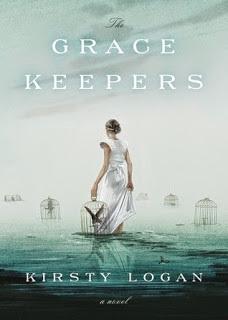 Like many of books I've read lately,
The Gracekeepers
by Kirsty Logan features the end of civilization. But although it takes place some undefined time after the end of life as we know it now, the characters are concerned with their present and most consider whatever came before to be as useless as legend.
Like many of books I've read lately,
The Gracekeepers
by Kirsty Logan features the end of civilization. But although it takes place some undefined time after the end of life as we know it now, the characters are concerned with their present and most consider whatever came before to be as useless as legend.In The Gracekeepers , the sea level has risen over cities and towns and only small islands remain. Some people cling to the land and a sense of heritage, but because there isn't enough to go around, many live permanently on boats. These sailors have to come to land to refuel, meet social obligations, and in the case of North's circus, perform for landlockers to earn food and survive. The landlockers don't much cotton to damplings, as the sailors are known, and the chief tension in The Gracekeepers is certain characters' longing either for land or for sea—we never do seem to be given what we really want, do we?
North loves the sea and would be perfectly content to live out her days there. But the ringmaster wants to marry her off to his son and buy a house on land for her, and what he says goes. Not only does North feel unsteady on land, but she also is going to give birth to a selkie's child. The word is never used in the novel, but the mysterious selkies must have been inspired by the Celtic legends of merpeople.
The other main character, Callanish, is the offspring of a woman and a selkie: her webbed fingers and toes shout it to the world. In order to do her duty as a Gracekeeper, she must wear shoes and gloves at all times. Callanish is not free in any way. Gracekeepers live all alone and perform funerals that involve the starvation of a small bird, a grace, to mark the end of the mourning period.
The writing is so magical and atmospheric that I didn't want The Gracekeepers to end. The strongest parts were the sections from the main characters' points of view, and some of the importance of the other characters is left totally up to the reader to decide. The omission of explicit explanations contributed to the sense of magic. One theme of the novel seems to be waiting, and the reader waits for something to happen, but the drama at the end of The Gracekeepers isn't the strongest part. This is the novel for a reader who wants to be swept into a mysterious land where the reader must decide on the meaning of people, animals, and actions based on only the most subtle of hints.
The Gracekeepers debuts tomorrow!
Novels I've Read in 2015:
 Eleanor & Park
by Rainbow Rowell
Eleanor & Park
by Rainbow Rowell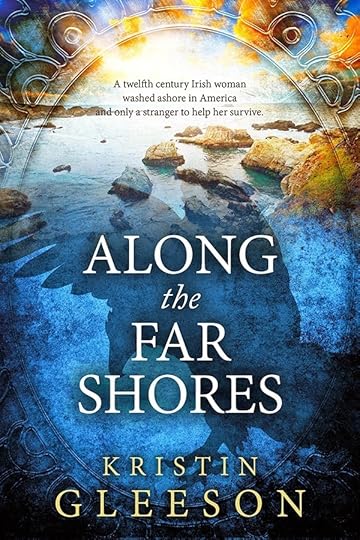 Along the Far Shores
by Kristin Gleeson
Along the Far Shores
by Kristin Gleeson Station Eleven
by Emily St. John Mandel
Station Eleven
by Emily St. John Mandel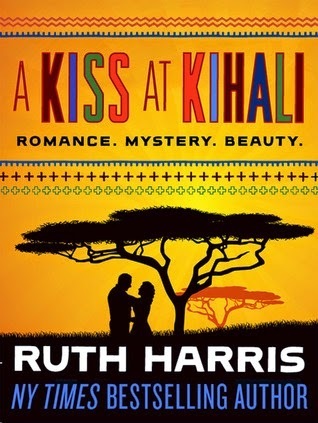 A Kiss at Kihali
by Ruth Harris
A Kiss at Kihali
by Ruth Harris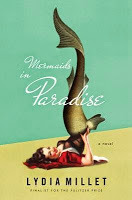 Mermaids in Paradise by Lydia Millet
Mermaids in Paradise by Lydia Millet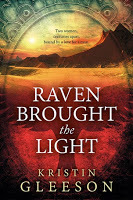 Raven Brought the Light by Kristin Gleeson
Raven Brought the Light by Kristin Gleeson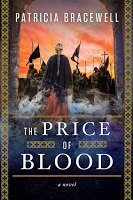 The Price of Blood
by Patricia Bracewell
The Price of Blood
by Patricia Bracewell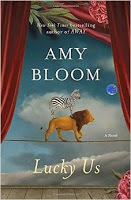 Lucky Us
by Amy Bloom
Lucky Us
by Amy Bloom
Published on May 18, 2015 00:30
May 15, 2015
Unpredictable Worlds is Here
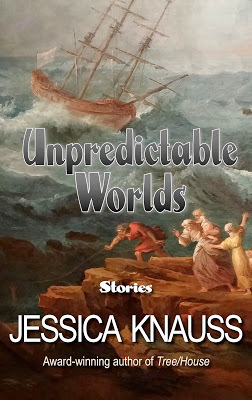 It's out! If you preordered the ebook, you can already enjoy these zany yet heartfelt stories. You still have a few hours to get it for only 99 cents while the network catches up... And the softcover is ready for not much money here and here.
It's out! If you preordered the ebook, you can already enjoy these zany yet heartfelt stories. You still have a few hours to get it for only 99 cents while the network catches up... And the softcover is ready for not much money here and here.Celebrate with a great interview at Kristin Gleeson's blog! Thanks again to Kristin, the author of some wonderful books, for asking fun, in-depth questions.
Five other amazing stops on the blog tour are all linked up for you here.
Let me know how you like the stories. More to come...
Published on May 15, 2015 04:17
May 11, 2015
Unpredictable Worlds—The Stories Are Almost Here!

Friday is the day! Unpredictable Worlds releases for your reading pleasure! I've been taking something of a tour of some wonderful blogs in honor of this exciting time.
Jody A. Kessler has already featured Unpredictable Worlds on her blog, saying it "sounds incredibly entertaining." There you'll find an excerpt of the prize-winning story "Stairs to the Beach."
Monday, I'm at author Tina Traverse's blog.
Author Maer Wilson is hosting me on Tuesday.
I'm stopping by author Jae Blakney's blog with a great interview with my friend and fellow author Seymour Hamilton on Wednesday.
Thursday, with the pre-release excitement mounting, I'll be traveling Steven Ramírez's Glass Highway with an excerpt from my favorite thus-far unpublished story. Unpredictable Worlds will be featured on the site all month!
Friday, May 15 is release day! Please check out the fantastic interview author Kristin Gleeson did with me at her blog on that day.
Sincere thanks to all these authors for hosting me.
You still have time to get Unpredictable Worlds at the never-again bargain price of 99 cents here. Pre-order and receive the book for the lowest price, before anyone else, on release day.
The softcover edition is already available. Affordable, nicely designed, and chock-full of astonishing stories. Order it here or from Amazon, or request it at your favorite bookstore or library.
Thanks for sharing the excitement!
Published on May 11, 2015 00:30
May 9, 2015
The End of One Journey, The Beginning of an Even More Exciting One
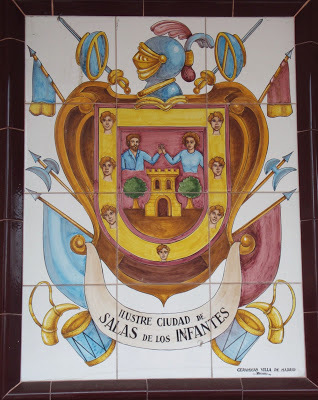 The crest of Salas de los Infantes tells the Lara side of the story. I spent two years writing my darling baby novel and more years revising it (see some of that saga here and here), but nothing happens before its time. All the elements have finally aligned for Seven Noble Knights. Bagwyn Books will publish it in late 2016.
The crest of Salas de los Infantes tells the Lara side of the story. I spent two years writing my darling baby novel and more years revising it (see some of that saga here and here), but nothing happens before its time. All the elements have finally aligned for Seven Noble Knights. Bagwyn Books will publish it in late 2016.It was the day of my and my husband's return from ten days in Spain, our favorite place in the world. It's a long flight, but because of the time zones, we left Madrid a bit after noon and arrived stateside at about 2:30 pm. Having breakfast in Madrid and landing, only a little later in the day, somewhere so different it gives you culture shock even though you recognize everything—it creates severe nostalgic ache to go along with the raw fatigue. Moaning and groaning ensues. We took in the scenery, my husband kept reaching for the clutch in our automatic transmission, and we made it home to unpack in less than ten minutes, our few souvenirs bizarrely out of context now.
Yet some of the euphoria of the journey had imprinted on our minds and would be extended by an unexpected but long-hoped-for email. I was taking care of business when at 6:44 pm, a message came in with the subject SEVEN NOBLE KNIGHTS from the publisher I had so jubilantly submitted the full manuscript to in February. Up until now, these messages have been disappointing, so I braced myself.
"Dear Jessica," it began. "We have now finished our preliminary review of SEVEN NOBLE KNIGHTS..."
Yes, yes, but... I waited for the punch.
"...and have decided we are indeed interested in publishing."
Did I read that right?
This is a yes?
I never knew it would be so beautiful.
"This novel is very well done and hard to put down!"
That's when the tears welled up. To see my hard work pay off!
My husband entered the room and I squeaked, "I think my dreams are coming true."
It's taken a few weeks to iron out the legal mumbo-jumbo, but I can now look forward to working with professionals who specialize in medieval and renaissance fiction... on even more revisions. But really, when I came across Bagwyn, I was impressed that it's the fiction imprint of the Arizona Center for Medieval and Renaissance Studies. I already own a few of their books! I can't imagine a more appropriate publisher for Seven Noble Knights.
Thanks to all the writers and historical fiction lovers who helped me through the drafts and the many revisions. You know who you are. I'll name names in the published acknowledgments.
[reblogged from Seven Noble Knights]
Published on May 09, 2015 06:23
May 4, 2015
Seven Noble Knights in Modern Life
My recent trip to Spain had many life-changing moments. Most relevant to my writing, I got to see the legend upon which I based my novel Seven Noble Knights "out in the world." The events, if they ever really took place, happened more than 1000 years ago. That's a lot of time for historians, minstrels, and everyone else to make the story their own.
Most amusing to me was the way entrepreneurs could use the characters' names and count on their buying public to know what they're referring to. For example:
 Mudarra Café and Grill in Salas de los InfantesThis restaurant is named for the hero of the second part of the saga, who redeems the González family after fifteen years.
Mudarra Café and Grill in Salas de los InfantesThis restaurant is named for the hero of the second part of the saga, who redeems the González family after fifteen years.
 Los Infantes Bakery in Salas de los InfantesAn enterprising pastry chef knew "Los Infantes" (the seven noble knights of my title) would lend his wares credibility.
Los Infantes Bakery in Salas de los InfantesAn enterprising pastry chef knew "Los Infantes" (the seven noble knights of my title) would lend his wares credibility.
 Doña Lambra Hotel and RestaurantMore surprisingly, this hotel and restaurant flaunts the name of the legend's supervillain, Doña Lambra. Granted, it's located in Barbadillo del Mercado, her territory.
Doña Lambra Hotel and RestaurantMore surprisingly, this hotel and restaurant flaunts the name of the legend's supervillain, Doña Lambra. Granted, it's located in Barbadillo del Mercado, her territory.
 Barbadillo also boasts a Lambra Street!
Barbadillo also boasts a Lambra Street!
 And a twentieth-century sculptor was moved to honor Barbadillo's most notorious ruler with a rather nice statue. The inscription reads, "Doña Lambra. Between history and legend, she ruled this village in the high Middle Ages, immersed in the events that would end with the betrayal of the seven noble knights and Mudarra's revenge (10th century)." Behind Lambra, on the left, is an impression of her husband, Ruy Blásquez, the seven noble knights' uncle. On the other side, Mudarra, the great hero. The statue tells a lot of the legend with no need for reference elsewhere. My husband and I weren't sure where the statue was, so we walked what we thought was the whole town with no luck, and then asked a couple of different residents before we found it. I was thrilled to be able to speak the name of the antagonist of my novel and see recognition on people's faces. They needed no explanation!
And a twentieth-century sculptor was moved to honor Barbadillo's most notorious ruler with a rather nice statue. The inscription reads, "Doña Lambra. Between history and legend, she ruled this village in the high Middle Ages, immersed in the events that would end with the betrayal of the seven noble knights and Mudarra's revenge (10th century)." Behind Lambra, on the left, is an impression of her husband, Ruy Blásquez, the seven noble knights' uncle. On the other side, Mudarra, the great hero. The statue tells a lot of the legend with no need for reference elsewhere. My husband and I weren't sure where the statue was, so we walked what we thought was the whole town with no luck, and then asked a couple of different residents before we found it. I was thrilled to be able to speak the name of the antagonist of my novel and see recognition on people's faces. They needed no explanation!
Stories are powerful, and apparently they last through time. I'm proud to continue the legend of the seven noble knights.
Lest we forget:
 Unpredictable Worlds
releases for Kindle on May 15 with a softcover edition available the same day.
Unpredictable Worlds
is already available for preorder for only 99 cents. Once it’s out there in the world, the price will go up, so save at least 66% now and have this strangely amazing book delivered to your device on release day. Tune in next week for interviews and book blasts in honor of this book, which is the intriguing result of all my years of writing stories.
Unpredictable Worlds
releases for Kindle on May 15 with a softcover edition available the same day.
Unpredictable Worlds
is already available for preorder for only 99 cents. Once it’s out there in the world, the price will go up, so save at least 66% now and have this strangely amazing book delivered to your device on release day. Tune in next week for interviews and book blasts in honor of this book, which is the intriguing result of all my years of writing stories.
Most amusing to me was the way entrepreneurs could use the characters' names and count on their buying public to know what they're referring to. For example:
 Mudarra Café and Grill in Salas de los InfantesThis restaurant is named for the hero of the second part of the saga, who redeems the González family after fifteen years.
Mudarra Café and Grill in Salas de los InfantesThis restaurant is named for the hero of the second part of the saga, who redeems the González family after fifteen years. Los Infantes Bakery in Salas de los InfantesAn enterprising pastry chef knew "Los Infantes" (the seven noble knights of my title) would lend his wares credibility.
Los Infantes Bakery in Salas de los InfantesAn enterprising pastry chef knew "Los Infantes" (the seven noble knights of my title) would lend his wares credibility. Doña Lambra Hotel and RestaurantMore surprisingly, this hotel and restaurant flaunts the name of the legend's supervillain, Doña Lambra. Granted, it's located in Barbadillo del Mercado, her territory.
Doña Lambra Hotel and RestaurantMore surprisingly, this hotel and restaurant flaunts the name of the legend's supervillain, Doña Lambra. Granted, it's located in Barbadillo del Mercado, her territory. Barbadillo also boasts a Lambra Street!
Barbadillo also boasts a Lambra Street! And a twentieth-century sculptor was moved to honor Barbadillo's most notorious ruler with a rather nice statue. The inscription reads, "Doña Lambra. Between history and legend, she ruled this village in the high Middle Ages, immersed in the events that would end with the betrayal of the seven noble knights and Mudarra's revenge (10th century)." Behind Lambra, on the left, is an impression of her husband, Ruy Blásquez, the seven noble knights' uncle. On the other side, Mudarra, the great hero. The statue tells a lot of the legend with no need for reference elsewhere. My husband and I weren't sure where the statue was, so we walked what we thought was the whole town with no luck, and then asked a couple of different residents before we found it. I was thrilled to be able to speak the name of the antagonist of my novel and see recognition on people's faces. They needed no explanation!
And a twentieth-century sculptor was moved to honor Barbadillo's most notorious ruler with a rather nice statue. The inscription reads, "Doña Lambra. Between history and legend, she ruled this village in the high Middle Ages, immersed in the events that would end with the betrayal of the seven noble knights and Mudarra's revenge (10th century)." Behind Lambra, on the left, is an impression of her husband, Ruy Blásquez, the seven noble knights' uncle. On the other side, Mudarra, the great hero. The statue tells a lot of the legend with no need for reference elsewhere. My husband and I weren't sure where the statue was, so we walked what we thought was the whole town with no luck, and then asked a couple of different residents before we found it. I was thrilled to be able to speak the name of the antagonist of my novel and see recognition on people's faces. They needed no explanation!Stories are powerful, and apparently they last through time. I'm proud to continue the legend of the seven noble knights.
Lest we forget:
 Unpredictable Worlds
releases for Kindle on May 15 with a softcover edition available the same day.
Unpredictable Worlds
is already available for preorder for only 99 cents. Once it’s out there in the world, the price will go up, so save at least 66% now and have this strangely amazing book delivered to your device on release day. Tune in next week for interviews and book blasts in honor of this book, which is the intriguing result of all my years of writing stories.
Unpredictable Worlds
releases for Kindle on May 15 with a softcover edition available the same day.
Unpredictable Worlds
is already available for preorder for only 99 cents. Once it’s out there in the world, the price will go up, so save at least 66% now and have this strangely amazing book delivered to your device on release day. Tune in next week for interviews and book blasts in honor of this book, which is the intriguing result of all my years of writing stories.
Published on May 04, 2015 00:30
April 27, 2015
Great Stuff Coming Soon

My husband and I are back from an arduous research trip to Spain. Well, there was research, but we enjoyed it too much for it to be arduous. Here I am with the first written record of Spanish (as opposed to its forbear, Latin), from about the year 970. Funnily enough, that's the same decade when my novel Seven Noble Knights takes place!
 As I recover from jet lag and culture shock and meet a bunch of deadlines, I'll make a more thorough report of some of the wonders we saw.
As I recover from jet lag and culture shock and meet a bunch of deadlines, I'll make a more thorough report of some of the wonders we saw. And please don't forget:
Unpredictable Worlds
releases for Kindle on May 15 with a softcover edition available the same day.
Unpredictable Worlds
is already available for preorderfor only 99 cents. Once it’s out there in the world, the price will go up, so save at least 66% now and have this strangely amazing book delivered to your device on release day.
And please don't forget:
Unpredictable Worlds
releases for Kindle on May 15 with a softcover edition available the same day.
Unpredictable Worlds
is already available for preorderfor only 99 cents. Once it’s out there in the world, the price will go up, so save at least 66% now and have this strangely amazing book delivered to your device on release day.
Published on April 27, 2015 00:30
April 20, 2015
Great Writers of New England: Emily Dickinson
 Aside (and this is a huge aside) from nearly 2000 revolutionary, hair-raising poems, Emily Dickinson was the author of the finest query letter ever:
Aside (and this is a huge aside) from nearly 2000 revolutionary, hair-raising poems, Emily Dickinson was the author of the finest query letter ever: Mr Higginson, Are you too deeply occupied
Mr Higginson, Are you too deeply occupied to say if my verse is alive?Mr. Higginson had put out a call to "young writers" to submit their materials. Emily was 30 years old at the time, which is youngish, but let's face it, Mr. Higginson probably intended the announcement for young male writers. He did read what she sent, and did think her poems were alive, perhaps too much so. Out of concern for their nonconformity with the poems of the day, he discouraged publication. Emily's sister, Lavinia, was surprised at the copious amounts of poetry in the house where they both lived after Emily had passed away. Luckily, she found editors who believed in them, and they weren't lost to future generations.

 Lavinia's grave site gets nearly as many signs of respect as Emily's, in recognition of her contribution to literature in English by publishing her sister's poetry.
Lavinia's grave site gets nearly as many signs of respect as Emily's, in recognition of her contribution to literature in English by publishing her sister's poetry.The tour at the beautiful home (at the top of the post) where Emily was born and died emphasized her passionate, gregarious nature. Her hair remained bright red until her death, as if reflecting the emotion we see in her writing. Her family was important in Amherst and Emily was well educated and had many friends. But the fact remains that as her life went on, she became more and more reclusive. Emily died at 55, and high blood pressure seems to have been the culprit. High blood pressure and reclusiveness suggest that she suffered a lot of anxiety.
On the other hand, when you enter her bedroom, you can see why she wouldn't have wanted to leave. It was on the second floor in the corner visible in the photo above, and she had great views:
 She could see her brother's house next door...
She could see her brother's house next door...
 ...the building where her father worked in town...
...the building where her father worked in town...
 ...and this church's steeple. Most of the house is set up with replicas because the original furniture and dress are kept in other museums, but in the bedroom, there was the original stove and bed, and something nowhere else could boast: the original floor. It was covered the way it must have been when Emily lived there, with woven rush mats, but the guide described for us that before the mats were placed, you could see the scuff marks where she would actually have walked! This helped them place the furniture pieces in the exact positions they would have occupied during Emily's lifetime.
...and this church's steeple. Most of the house is set up with replicas because the original furniture and dress are kept in other museums, but in the bedroom, there was the original stove and bed, and something nowhere else could boast: the original floor. It was covered the way it must have been when Emily lived there, with woven rush mats, but the guide described for us that before the mats were placed, you could see the scuff marks where she would actually have walked! This helped them place the furniture pieces in the exact positions they would have occupied during Emily's lifetime. This is a replica of the desk where she often worked. It was placed near the corner windows so she wouldn't miss seeing anything while composing. I was impressed with the small size of the table. What does a determined writer need beyond writing implements? Not much at all!
This is a replica of the desk where she often worked. It was placed near the corner windows so she wouldn't miss seeing anything while composing. I was impressed with the small size of the table. What does a determined writer need beyond writing implements? Not much at all!I say "determined" because she kept writing in spite of what appears to be a deeply held belief that her writing was of no interest beyond Emily's circle of friends. In other matters, she doesn't seem to have been someone so easily kept down. So why didn't she try harder to be published? (Ten poems appeared anonymously during her lifetime.) It must be partly due to her respect for Mr. Higginson's opinion. The two corresponded throughout Emily's life. He visited Amherst a couple of times and spoke at her funeral. And so, in spite of numerous accomplishments, Mr. Higginson is mostly remembered as the man who told Emily Dickinson not to publish.
Lack of publishing deadlines freed Emily up to keep perfecting her poems for years. She was very particular about word choice, which is admirable, but has made the editing of her work nightmarish.


Much more information about Emily Dickinson's surprisingly complex life and the inspiring place she lived and worked is available at the museum's site.
Published on April 20, 2015 00:33
April 13, 2015
Cover Reveal: New Amazing Book of Stories Ready for Bargain Pre-Order
It's almost here.
Unpredictable Worlds
releases May 15!
 If you've ever despaired that my published and prize-winning fiction is all over the web, in no single place, and that I have many more stories to amaze you with, but they haven't been picked up yet, despair no more!
Unpredictable Worlds
has it all, and more!
If you've ever despaired that my published and prize-winning fiction is all over the web, in no single place, and that I have many more stories to amaze you with, but they haven't been picked up yet, despair no more!
Unpredictable Worlds
has it all, and more!
The synopsis:
A teacher controls her students with an edible microchip. A reporter turns into a rhinoceros. A couple's efforts to eat local go frighteningly awry. If you're looking to be surprised, puzzled, or just plain entertained, pick up this omnibus. There's something for everyone!
More than twenty years in the making, Unpredictable Worlds contains all of Jessica Knauss’s published and prize-winning short fiction as of March 2015 and a few of her best stories never before seen in print or ebook. Zany plots and outrageous characters will stretch your belief and tug at your heart.
WARNING: These stories contain exaggeration, elision, and disregard for “the real world.” Some even exhibit a tone of blatant optimism. However, they respect human speech patterns, admire good grammar, and hold proper punctuation in the highest regard.
Enjoy!
The cover features details from a French painting that dominates one of the galleries at the Worcester Art Museum. I find the turbulence and the barely visible hand reaching out of the water disturbing. I hope it captures the vaguely unsettling nature of many of the stories in Unpredictable Worlds .
Unpredictable Worlds releases for Kindle on May 15 with a softcover edition to follow. Seem too far in the future? It isn't so far when you consider this: Unpredictable Worlds is already available for preorder for only 99 cents. Once it's out there in the world, the price will go up, so save at least 66% now and have this strangely amazing book delivered to your device on release day.
 If you've ever despaired that my published and prize-winning fiction is all over the web, in no single place, and that I have many more stories to amaze you with, but they haven't been picked up yet, despair no more!
Unpredictable Worlds
has it all, and more!
If you've ever despaired that my published and prize-winning fiction is all over the web, in no single place, and that I have many more stories to amaze you with, but they haven't been picked up yet, despair no more!
Unpredictable Worlds
has it all, and more!The synopsis:
A teacher controls her students with an edible microchip. A reporter turns into a rhinoceros. A couple's efforts to eat local go frighteningly awry. If you're looking to be surprised, puzzled, or just plain entertained, pick up this omnibus. There's something for everyone!
More than twenty years in the making, Unpredictable Worlds contains all of Jessica Knauss’s published and prize-winning short fiction as of March 2015 and a few of her best stories never before seen in print or ebook. Zany plots and outrageous characters will stretch your belief and tug at your heart.
WARNING: These stories contain exaggeration, elision, and disregard for “the real world.” Some even exhibit a tone of blatant optimism. However, they respect human speech patterns, admire good grammar, and hold proper punctuation in the highest regard.
Enjoy!
The cover features details from a French painting that dominates one of the galleries at the Worcester Art Museum. I find the turbulence and the barely visible hand reaching out of the water disturbing. I hope it captures the vaguely unsettling nature of many of the stories in Unpredictable Worlds .
Unpredictable Worlds releases for Kindle on May 15 with a softcover edition to follow. Seem too far in the future? It isn't so far when you consider this: Unpredictable Worlds is already available for preorder for only 99 cents. Once it's out there in the world, the price will go up, so save at least 66% now and have this strangely amazing book delivered to your device on release day.
Published on April 13, 2015 00:01



